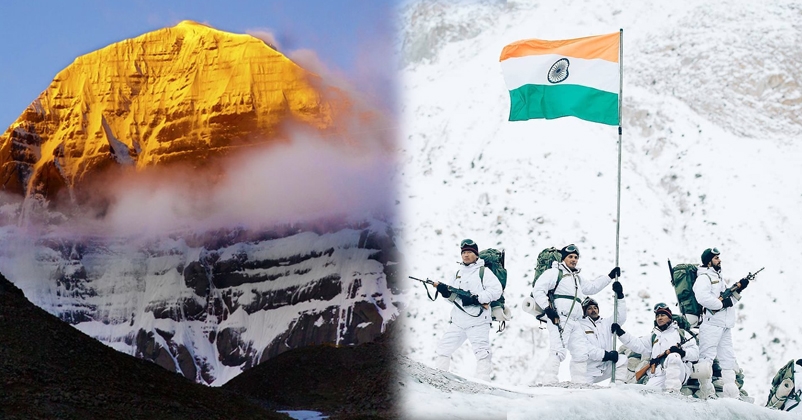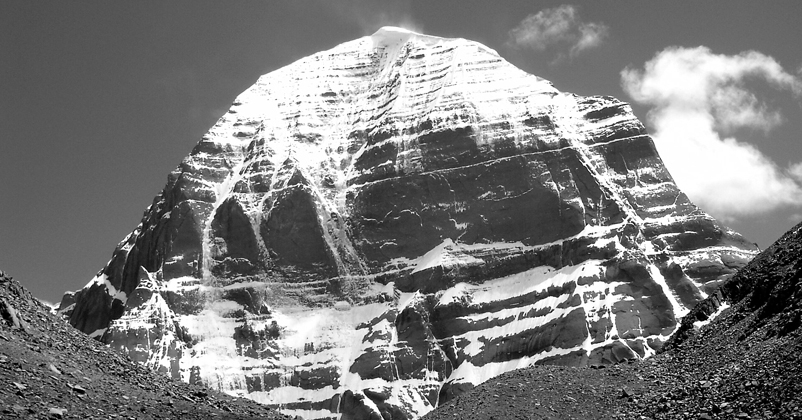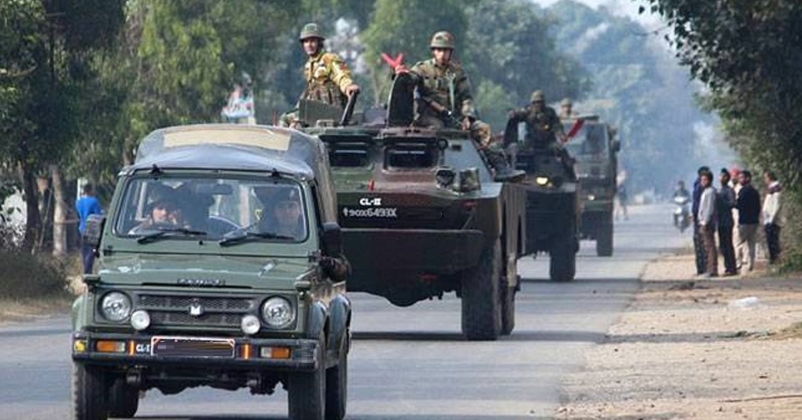India-China Stand Off; Capturing the Kailash Mountain range how India gained the upper hand in the ongoing feud
16 Sep 2020 17:19:06

The Indian Army's pre-emptive action on the south of Pangong-Tso Lake on the intervening night of 29-30 August gave India a strategic edge over China, also, this is the first time since 1962 that India not only defeated the Chinese PLA but also captured successfully the hills in the southern end of Pangong, where the two countries have not yet been conducting military deployments. Since India has taken the Kailash mountain range under its jurisdiction, one of the largest and sacred pilgrimage sites in India, Kailash Mansarovar's Kailash Range, China is completely dazed and tensions between two sides have further escalated.
On the night of 29-30 August, the Indian Army took over the entire area of about 60-70 km south of Pangong-Tso Lake and the Rechin-La Pass is part of all the Kailash range. Indian soldiers while capturing every peak chanted “Har Har Mahadev”. Before the war of 1962, this entire area was under the jurisdiction of India. But after the Battle of Rejangla and Chushul in the '62 war, the armies of both the countries went after it and the area was completely evacuated.
Meanwhile, the action of India from 29-30 August has stirred the Chinese Army. The Chinese army wants to usurp the hills of these Kailash ranges at any cost. That is why a large number of Chinese soldiers are gathering around India's forward position. The Chinese Army with its tanks and ICV vehicles is setting up its base on the LAC-adjacent Moldo, Spangur Gap, and Racine Grazink Land. Chinese soldiers have gathered there with spears and other medieval barbaric weapons. But Indian soldiers have made it clear that if the Chinese troops try to cross the barbed wire on India's forward position, then the Chinese army will be given a tough response. The Indian Army has deployed its entire tank brigade near Rechin-La Pass. In addition, infantry soldiers are deployed with rocket launcher and ATGMs i.e. anti-tank guided missiles so that if the Chinese army tries to move forward then it should be chased back.

Kailash Mansarovar Yatra routes; What changed after the 1962 war
For the unversed, the shortest and easiest route to visit the holy Kailash Manasarovar from India is from Ladakh itself. Before the war of '62, pilgrims used to go to Kailash Mansarovar Yatra from Demchok in Ladakh. The distance from Chushul to Demchok is about 150 kilometers and the distance from Demchok to Kailash Mansarovar is about 350 km. This Kailash mountain range extends from south of Pangong Tso to Kailash Mansarovar, that is, about 450 kilometers. Although this route was discontinued after the war of '62 when China illegally capturing it closed the route of Kailash Mansarovar Yatra, it was reopened in 1981 with the consent of both countries. Even after this, the Chinese army kept trying to infiltrate Demchok, or opposed the construction of roads and other infrastructure by India. The area passes through the south of Pangong Lake where the Kailash mountain ranges like Gurung Hill, Magar Hill, Mukherpari and Rechin-La Pass are spread.
China gives visas to some Indian pilgrims every year for the Kailash Mansarovar Yatra. These passengers travel on two routes to Kailash Manasarovar. The first is from the Nathula Pass in Sikkim and the second is from the Lipulekh Pass in Uttarakhand. But it takes a long time to reach Kailash Mansarovar Yatra from both the paths, apart from this, the third route is via Nepal.
Recently, India figured out a fourth way which was inaugurated by Defence Minister Rajnath Singh on May 8 this year to resolve the matter for an unperturbed Mansarovar Yatra. The Border Roads Organization (BRO) has connected the Kailash Mansarovar Marg in Uttarakhand to Lipulekh Pass at an altitude of 17,060 feet. The Dharchula-Lipulekh route is an extension of the Pithoragarh-Tawaghat-Ghatibgarh road. It originates from Ghatibgarh and ends at Lipulekh Pass, the gateway to Kailash Mansarovar. In this 80 km road, the height increases from 6000 feet to 17,060 feet, remaining three km near China border. India built this link route so that the road to Lipulekh would facilitate Kailash Yatra and also provide road connectivity to the local people. At the same time, vehicles of the Army and paramilitary forces can reach close to the China border.
This is precisely why China is troubled by India for building a road to Lipulekh. This is also the reason that China is desperately preparing a new missile base near the holy Mansarovar lake. Close to this ground-to-air missile base, China has also done some new construction which can be a barrack for the soldiers. This was revealed by satellite pictures recently. Mansarovar lake is very close to the disputed tri-junction of India-China-Nepal, Lipulekh, where China is continuously increasing its strength. An open source intelligence revealed from satellite photos that China had launched one of the Surface to Air (SAM) (ground-to-air) missiles very close to the Mansarovar lake near Mount Kailash in Tibet. SAM missiles are commonly used for protection from air-raid of a sensitive military base or building. These missile systems provide protection from fighter-jets, helicopters or drones attacking from the sky.
On the basis of satellite photographs, it is being claimed that some infrastructure development and some residential construction work is also visible near Mansarovar lake. This construction work is going on since the month of May this year and it is believed that these residential construction areas can be barracks etc. of Chinese soldiers.

How the Indian Army has an upper hand now?
Since China did not allow the Kailash Mansarovar pilgrimages to pass through these Kailash mountain ranges crossing the border, India has achieved its major objective by taking over this part of the Kailash mountain ranges under its jurisdiction on the intervening night of August 29-30.
As we read, before the 1962 war with China, this area was under the jurisdiction of India but after the battle of Rechin-La and Chushul ing the war, the armies of both the countries went after it and the area was completely evacuated. This is the first time since 1962 that India defeated the Chinese and captured these hills in the southern end of Pangong, where the two countries have not yet been conducting military deployments. In fact, China opened a new front with India on the night of August 29/30 by trying to infiltrate the Thakung Peak at the southern end of Pangong Lake.
Indian troops launched a campaign to take over all the important peaks of the region after thrashing the Chinese. In this sequence, within 3 days, the Indian Army took the entire area of about 60-70 km south of Pangong-Tso Lake in its possession and gave a major blow to the People’s Liberation Army (PLA) of China.
The holy Mansarovar lake close to Mount Kailash is a sacred shrine for Hindus. This lake is part of the Tibet region and is very close to the India-China-Nepal border. This lake is very close to the disputed area Lipulekh and Kalapani of this tri-junction and it is the same Lipulekh Pass and Kalapani area, which Nepal depicted falsely as its areas in the recently released new map. However, these areas have been part of India for centuries and are under the jurisdiction of Pithoragarh in Uttarakhand. Also, it is believed that the government of Nepal has included these areas in its new map on the incitement of China.